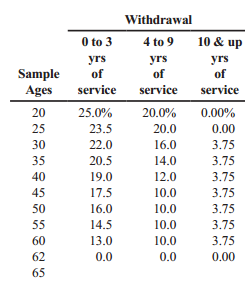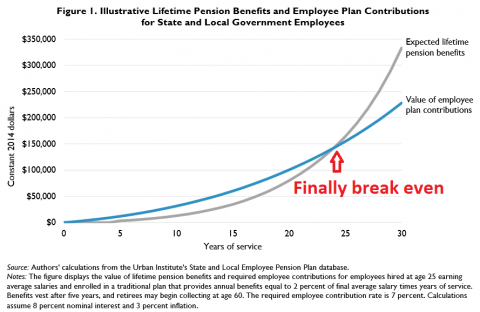While Teach for America (TFA) teachers are working to close the achievement gap, most are also losing out on core retirement benefits like a pension and/or Social Security, creating a gap in retirement security.
Teach for America has produced close to 40,000 teachers over the past decade and continues to grow rapidly. Corps members serve a two-year commitment in low-income urban or rural schools (disclosure: I was a TFA corps member and taught in Baltimore for three years). They work as full-time teachers and receive salary from their district employers and presumably retirement benefits from their state or local system.
Although TFA teachers are just a drop in the bucket compared to the entire teaching pool, the program gets frequent national attention, especially about its retention and effectiveness numbers. A recent study from the University of North Carolina examined retention and effectiveness amongst early-career teachers in the North Carolina public schools, dividing teachers by their preparation program. The study found that TFA teachers, while only comprising a small fraction (0.5 percent) of all North Carolina teachers, outpaced all other teacher preparation programs in teacher evaluation ratings and their added impact on student achievement. TFA teachers, however, had the lowest retention rates. Less than a third of North Carolina TFA teachers stayed for 3 years and only 10 percent stayed for 5 years.
While most TFA teachers may not realize it, almost all are losing out on retirement benefits for their time in the classroom. Consistent with national trends, TFA teachers are not staying in the classroom long enough to meet state service requirements or vesting requirements for a pension (to be clear, TFA is simply too small to be the cause of these national trends). Most states require a 5 to 10 year vesting periods. Nationally, almost two-thirds (60.5 percent) of TFA teachers continue working as public school teachers beyond their two-year commitment, but nearly three-quarters (72 percent) of all TFA teachers will leave the classroom before five years. In North Carolina, 90 percent left without retirement benefits despite the state’s decision to keep lower service requirements at 5 years rather than 10 years. In several states, TFA teachers are not covered by Social Security because of state prohibitions against public school teachers and/or public sector workers; teachers in these locations lose out on pension and Social Security benefits.
Recently, Teach for America announced it would pilot a new program aimed at increasing preparation and retention amongst their teachers. The decision marks one of the biggest policy changes in its program history. In making this historic shift, the program should also consider that a significant portion of its members have lost out on core benefits, and teachers, as working professionals, need adequate pay and retirement security. Salary and benefits are obviously not the reason teachers teach, but they are important levers that stakeholders need to consider for strengthening recruitment and retention.
– Leslie Kan
This first appeared on teacherpensions.org




